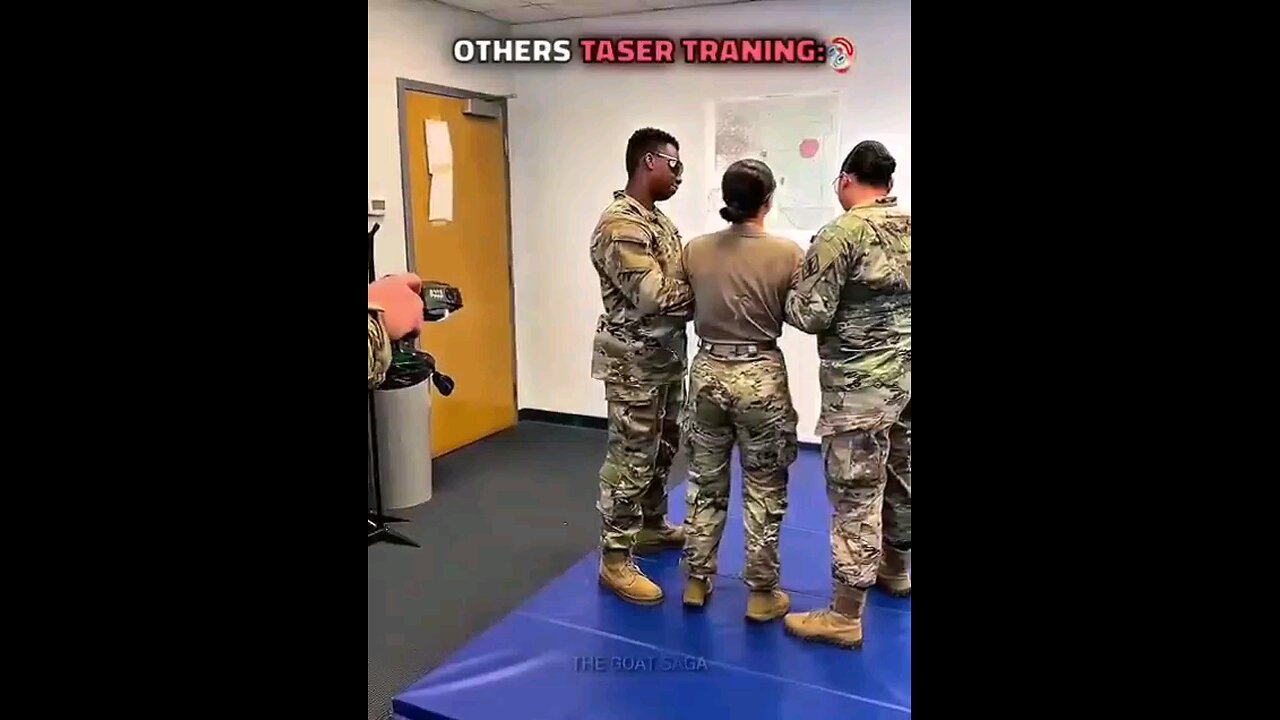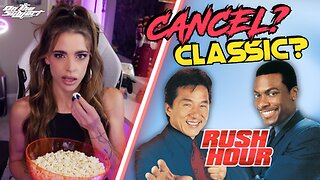Premium Only Content

hey guye i am army
When someone asks for a “trending description,” they’re typically looking for a concise and engaging summary that captures what’s currently popular or gaining rapid attention—especially in the context of social media or online platforms.
---
What "Trending" Means Across Platforms
On Social Media: It refers to topics, hashtags, or content that are quickly rising in popularity. Platforms like Twitter (X), TikTok, and Instagram use algorithms to spotlight what’s trending by tracking engagement—likes, shares, comments, and growth speed .
Why It Matters: Trending content gets more visibility, can spark conversations, boost reach, and keep content creators or brands in sync with what's resonating now .
Trending vs. Viral: While both describe popularity, "trending" typically refers to short-lived surges within a specific platform. "Viral" implies widespread and often cross-platform reach, usually lasting longer .
---
What Makes Content Trend?
Engagement Velocity: How fast a topic gains attention (likes, comments, shares, searches) matters as much as the total numbers .
Current Relevance: Tied to events, news, viral memes, or cultural moments .
Influencers & Amplification: Posts shared by influencers or celebrities can spark or fuel trends .
Platform Behavior: Algorithms prioritize what's fresh, engaging, and locally relevant—so trends may vary by user based on location and preferences .
---
Example: Writing a Good Trending Description
Suppose you're describing a new viral dance challenge on TikTok:
> "Trending Now: The #FlashGroove
When someone asks for a “trending description,” they’re typically looking for a concise and engaging summary that captures what’s currently popular or gaining rapid attention—especially in the context of social media or online platforms.
---
What "Trending" Means Across Platforms
On Social Media: It refers to topics, hashtags, or content that are quickly rising in popularity. Platforms like Twitter (X), TikTok, and Instagram use algorithms to spotlight what’s trending by tracking engagement—likes, shares, comments, and growth speed .
Why It Matters: Trending content gets more visibility, can spark conversations, boost reach, and keep content creators or brands in sync with what's resonating now .
Trending vs. Viral: While both describe popularity, "trending" typically refers to short-lived surges within a specific platform. "Viral" implies widespread and often cross-platform reach, usually lasting longer .
---
What Makes Content Trend?
Engagement Velocity: How fast a topic gains attention (likes, comments, shares, searches) matters as much as the total numbers .
Current Relevance: Tied to events, news, viral memes, or cultural moments .
Influencers & Amplification: Posts shared by influencers or celebrities can spark or fuel trends .
Platform Behavior: Algorithms prioritize what's fresh, engaging, and locally relevant—so trends may vary by user based on location and preferences .
---
Example: Writing a Good Trending Description
Suppose you're describing a new viral dance challenge on TikTok:
> "Trending Now: The #FlashGroove
When someone asks for a “trending description,” they’re typically looking for a concise and engaging summary that captures what’s currently popular or gaining rapid attention—especially in the context of social media or online platforms.
---
What "Trending" Means Across Platforms
On Social Media: It refers to topics, hashtags, or content that are quickly rising in popularity. Platforms like Twitter (X), TikTok, and Instagram use algorithms to spotlight what’s trending by tracking engagement—likes, shares, comments, and growth speed .
Why It Matters: Trending content gets more visibility, can spark conversations, boost reach, and keep content creators or brands in sync with what's resonating now .
Trending vs. Viral: While both describe popularity, "trending" typically refers to short-lived surges within a specific platform. "Viral" implies widespread and often cross-platform reach, usually lasting longer .
---
What Makes Content Trend?
Engagement Velocity: How fast a topic gains attention (likes, comments, shares, searches) matters as much as the total numbers .
Current Relevance: Tied to events, news, viral memes, or cultural moments .
Influencers & Amplification: Posts shared by influencers or celebrities can spark or fuel trends .
Platform Behavior: Algorithms prioritize what's fresh, engaging, and locally relevant—so trends may vary by user based on location and preferences .
---
Example: Writing a Good Trending Description
Suppose you're describing a new viral dance challenge on TikTok:
> "Trending Now: The #FlashGroove
When someone asks for a “trending description,” they’re typically looking for a concise and engaging summary that captures what’s currently popular or gaining rapid attention—especially in the context of social media or online platforms.
---
What "Trending" Means Across Platforms
On Social Media: It refers to topics, hashtags, or content that are quickly rising in popularity. Platforms like Twitter (X), TikTok, and Instagram use algorithms to spotlight what’s trending by tracking engagement—likes, shares, comments, and growth speed .
Why It Matters: Trending content gets more visibility, can spark conversations, boost reach, and keep content creators or brands in sync with what's resonating now .
Trending vs. Viral: While both describe popularity, "trending" typically refers to short-lived surges within a specific platform. "Viral" implies widespread and often cross-platform reach, usually lasting longer .
---
What Makes Content Trend?
Engagement Velocity: How fast a topic gains attention (likes, comments, shares, searches) matters as much as the total numbers .
Current Relevance: Tied to events, news, viral memes, or cultural moments .
Influencers & Amplification: Posts shared by influencers or celebrities can spark or fuel trends .
Platform Behavior: Algorithms prioritize what's fresh, engaging, and locally relevant—so trends may vary by user based on location and preferences .
---
Example: Writing a Good Trending Description
Suppose you're describing a new viral dance challenge on TikTok:
> "Trending Now: The #FlashGroove
When someone asks for a “trending description,” they’re typically looking for a concise and engaging summary that captures what’s currently popular or gaining rapid attention—especially in the context of social media or online platforms.
---
What "Trending" Means Across Platforms
On Social Media: It refers to topics, hashtags, or content that are quickly rising in popularity. Platforms like Twitter (X), TikTok, and Instagram use algorithms to spotlight what’s trending by tracking engagement—likes, shares, comments, and growth speed .
Why It Matters: Trending content gets more visibility, can spark conversations, boost reach, and keep content creators or brands in sync with what's resonating now .
Trending vs. Viral: While both describe popularity, "trending" typically refers to short-lived surges within a specific platform. "Viral" implies widespread and often cross-platform reach, usually lasting longer .
---
What Makes Content Trend?
Engagement Velocity: How fast a topic gains attention (likes, comments, shares, searches) matters as much as the total numbers .
Current Relevance: Tied to events, news, viral memes, or cultural moments .
Influencers & Amplification: Posts shared by influencers or celebrities can spark or fuel trends .
Platform Behavior: Algorithms prioritize what's fresh, engaging, and locally relevant—so trends may vary by user based on location and preferences .
---
Example: Writing a Good Trending Description
Suppose you're describing a new viral dance challenge on TikTok:
> "Trending Now: The #FlashGroove
-
 1:55:33
1:55:33
Glenn Greenwald
5 hours agoDeceitful Hysteria over Tucker's Speech on Kirk; IDF Funder Larry Ellison to Take Over CBS, Paramount, and now TikTok; U.S. Embraces Leading Al-Qaeda Terrorist | SYSTEM UPDATE #519
133K53 -
 34:40
34:40
Donald Trump Jr.
7 hours agoWe Will Make Charlie Proud | TRIGGERED Ep.276
161K82 -
 1:01:49
1:01:49
BonginoReport
6 hours agoErika Kirk Forgives Charlie’s Assassin - Nightly Scroll w/ Hayley Caronia (Ep.139)
76.9K75 -

megimu32
3 hours agoOn The Subject: Rush Hour | Would It Be Cancelled Today?
6.37K5 -
 1:24:12
1:24:12
Katie Miller Pod
5 hours ago $1.83 earnedEpisode 7 - Jillian Michaels | The Katie Miller Podcast
66.4K3 -
 LIVE
LIVE
LFA TV
1 day agoLFA TV ALL DAY STREAM ! | MONDAY 9/22/25
570 watching -
 1:02:10
1:02:10
LIVE WITH CHRIS'WORLD
5 hours agoLIVE WITH CHRIS'WORLD - Key Takeaways From Charlie Kirks Memorial
18.3K -
 1:37:17
1:37:17
Liberty Sentinel
6 days agoURGENT: Dr. Malone Warns of "Vaccine Cult" & Effort to "Fix God Gene" With Shots
14.2K13 -
 LIVE
LIVE
Rallied
6 hours ago $0.94 earnedHigh Octane Warzone Wins All Night
94 watching -
 8:35
8:35
Adam Does Movies
11 hours ago $0.58 earnedHIM - Movie Review
21.1K4